After something like 6 weeks of construction, you can bet that we were ready to bake.
First things first, fires can be annoying. It’s easy to start a fire with paper and kindling, but keeping it roaring is not a task at which I am particularly adept. For this reason, we purchased a product called “envirologs.” These are essentially logs made out of compacted paper that burn really well. They lite up immediately and will burn for about 2-3 hours. Hopefully as my fire skills improve I’ll be able to cheapen out my fuel source.
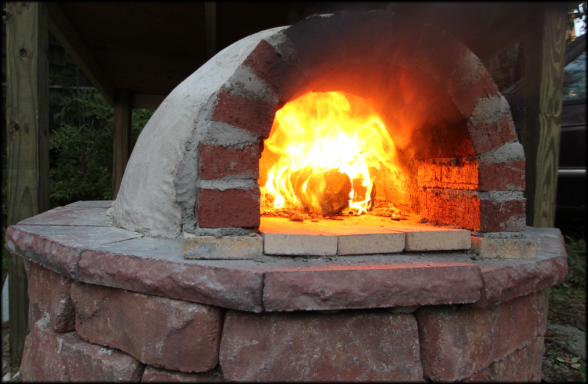
At times, the fire was so fierce flames would billow out of the arch.
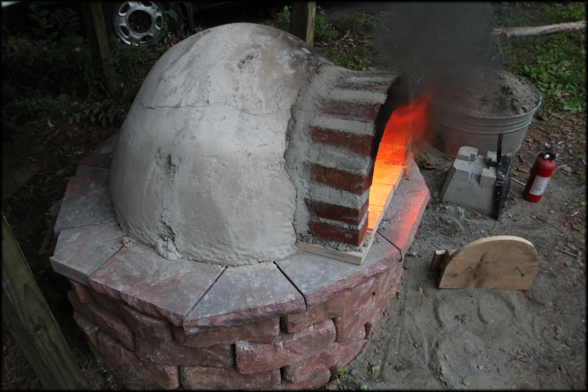
And obviously, since I’m kinda geeky, I had borrowed a thermal camera from work for oven analysis.
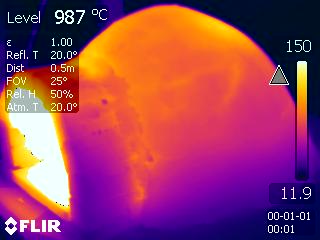
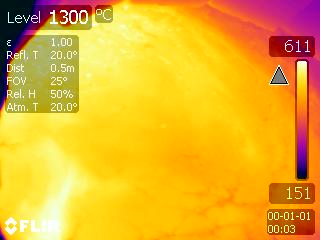

Please note: these temperatures are Celsius. Wait, celsius? Heck yeah it’s Celsius! 600°C is over 1,100°F. Awesome!!
But… there was a problem. The inside of the dome was definitely reaching impressive temperatures but the firebrick cooking surface wasn’t that hot at all. The theory here was that with the fresh air streaming into the oven along the base of the arch was keeping the cooking surface coolish.
Shaun L. to the rescue.
Shaun looked for tips online and found the key suggestion: As the log falls into embers, spread those embers across the base of the oven. Let the embers pre-heat the brick. Then brush those aside and get to cookin.
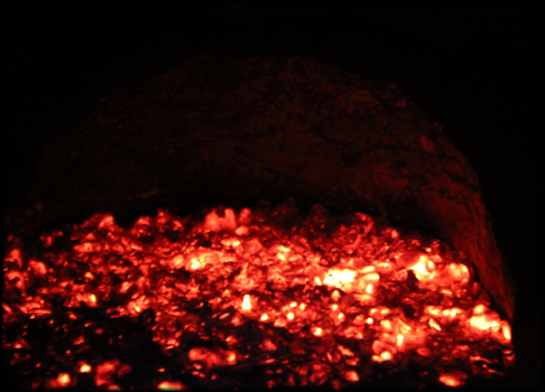
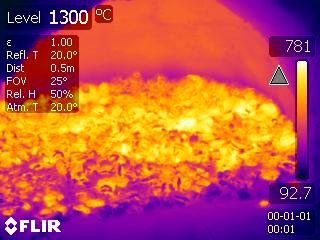
With this new strategy in place, it was time to cook some pizza.
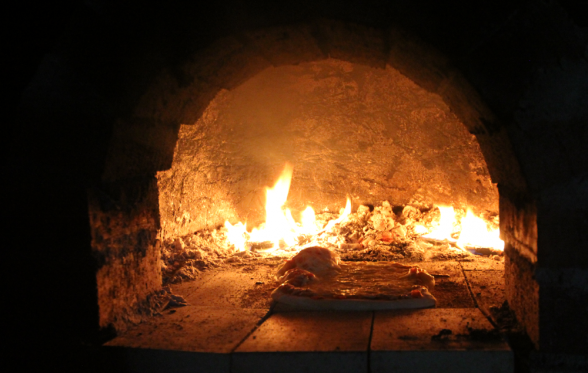
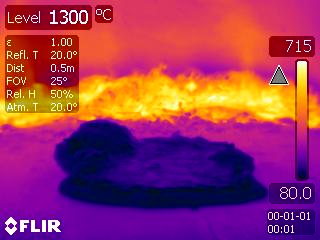
Those last two shots are pretty interesting. Basically, the top of the pizza is cooking beautifully from the radiant heat off the dome. But the bottom wasn’t hot enough, and wasn’t crisping up the way that I wanted. On the first day of cooking, the best we did was cook a pizza in 5 minutes. Yeah… that’s pretty fast, but not as fast as the experts. And the result was weak – literally weak. The pizza when held would droop dramatically. It didn’t have the crispiness to support its weight.
BUT! One helpful solution was clear: Sweep out a more direct line of ash and stick the pizza deeper into the oven. We did this on Wednesday night with much better results: 3 minute pizzas with improved crispy. Awesome!
I’m going to continue to adjust my cooking techniques an a quest for the ultimate pizza. Still, I’m quite pleased with the quality of the food coming out of my oven.
A big thanks to everyone who helped build it, especially Jen, Shaun, Brian, and Kev. Huge help those four. Here’s to pizza!!
I noticed a crack on the outside of the dome in photo 2. Will that affect the structural integrity of the dome for future cookings? Perhaps a supporting bulkhead could help there.
Great observation Kurt. That crack has also grown a bit from its original size. The book that I got says not to worry too much about cracks though, like you, I am also concerned.
Still, I’m not sure there’s much I can do on this one. Different Coefficients of Thermal Expansion from patching it could make it worse, so that’s out. The crack has propagated to the arch, and I have considered supporting the arch with an internal metal framework but I’m not sure it’s necessary. For the time being my plan is to watch it carefully and monitor it’s progression.
Construction techniques aside, would you do anything different if you did it again? Like do you feel it’s a good size? Bigger or smaller arch? A chimney?
How long does it take for the oven to warm up? Have you considered any non-pizza applications?
Also, thermal cameras are cool.
Ask me again in a few months after more cooking. There are many different styles of oven, and I’m not familiar enough with this one to be able to say if any other features would be nice to have.
As for cooking other things? Yes we have. We did some bread, but that hasn’t worked out yet. We did cook some beans in a cast iron pan… We threw the pan right on the fire! That was a huge success.
Putting cast iron directly on fires for cooking is awesome, we do fajitas like that when we go camping.
I want an update when you do some roast meat.
Looking at the pictures again, did you move the roof back for cooking?
Whoa, way to win the observant award. Yes, we move the roof back for cooking. We don’t have to, but otherwise the smoke billows into the trim and I suspect it will discolor over time.
It warmed the cockles of my geeky heart to see the thermal pictures! How awesome!
Howdy there!
Stumbled across your oven entries, as I am also in the midst of constructing a backyard oven.
I’m curious, 3 years later — how is the oven holding up?
(I was also amused by your description of the Kiko Denzer book… it does err on the “it’s all good” side!)
In any case, thanks for the detailed description/critique. I’m about to launch into the mudding portion of the construction, once I round up a million pounds of clay and sand. ;)
Hello there!
How’s it holding up? Alas, not well. I would recommend that you spend a LOT of time on the base structure. Mine was unlevel and after about 2 years of operation we saw big cracks form in the back. Like… BIG cracks. Easily one inch wide.
We thusly had to dismantle our oven – Such tragedy!!
If you need particular tips, let me know and I’m happy to share. Good luck!